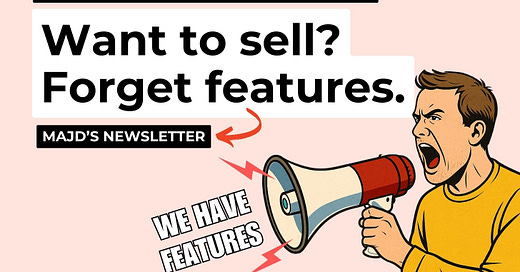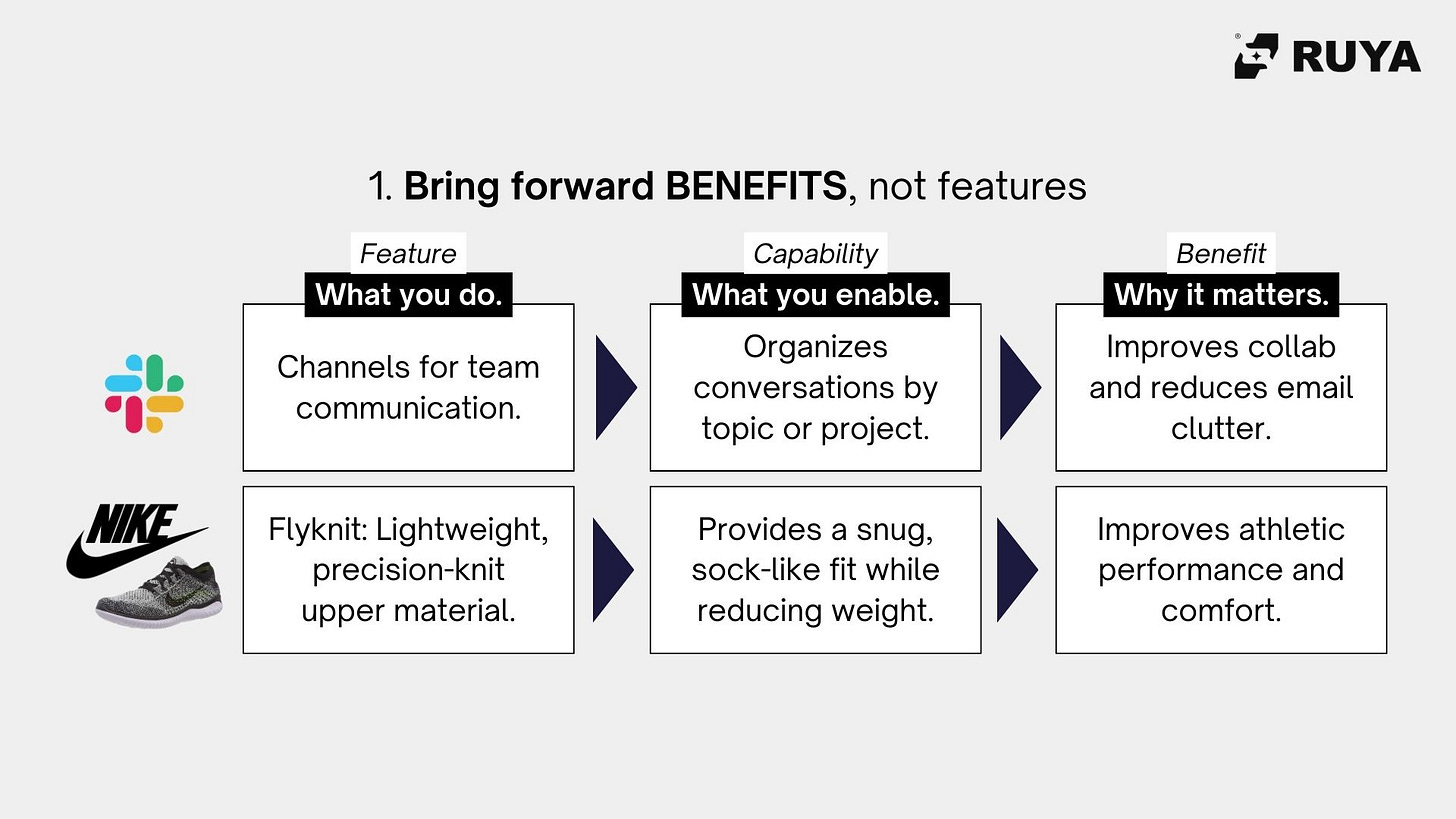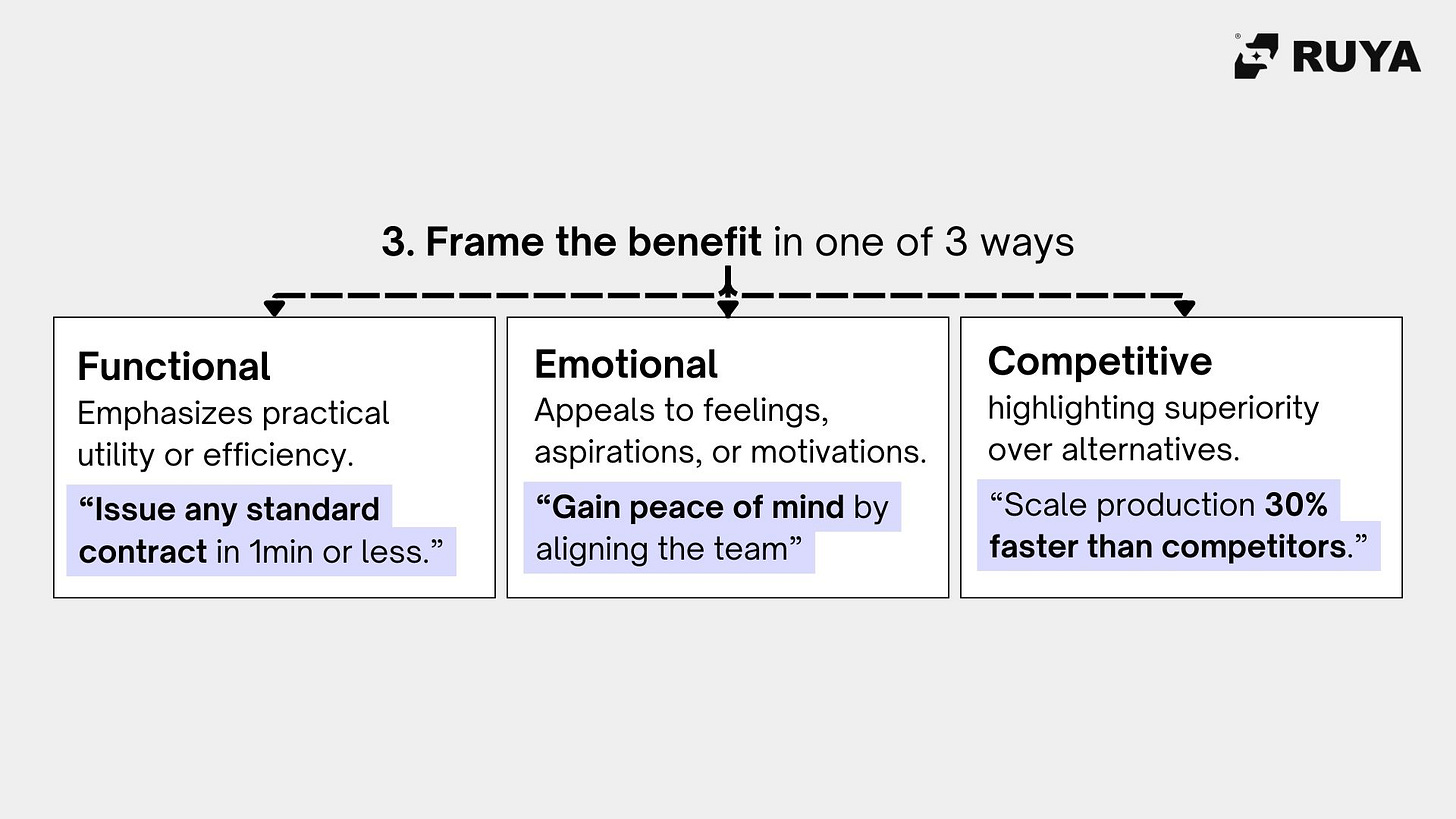3 Simple Steps I Use to Make Your Product Pitch 10x Stronger
Discover how framing benefits makes your product irresistible
In this edition:
🔷 Why pitching features alone is killing your conversions
🔷 The 3-part formula to turn any feature into a compelling benefit
🔷 The 4 types of benefits that customers actually care about
🔷 How to frame benefits so they stick (functionally, emotionally, or competitively).
People don’t buy features. They buy outcomes.
Recently during a GTM Lab I had, I was helping a founder refine her competitive positioning.
Her startup has a solid product, but she kept repeating the same lines over and over again:
“We have more features than the competition.”
...“Ok fine”, I said, “but do your customers want these?”
It’s a common blind spot for founders who are too deep in the build.
You pitch features as a competitive sell.
Let me rephrase that.
You pitch A TON of features as a competitive sell.
Problem is? That’s not how you get clients.
Founders often get product-obsessed.
At the end of the day, you’ve been working on your product for ages. Naturally, you assume the features (quality and quantity) will wow your audience.
You focus on what the product does, not on what it offers to the user.
If you don’t bridge that gap, your pitch falls flat.
No matter how advanced (and extensive!) your feature list is.
When you shift your pitch from features to benefits, you go from:
“Our tool has AI-powered filtering.”
To:
“We save you 10 hours a week by eliminating manual review.”
That’s what makes people say: “I need this.”
I teach founders a simple 3-step framework to reframe their pitch:
1. Feature → Capability → Benefit
Reframes your feature by bringing forward the benefit it offers users. One of the simplest (and most effective!) positioning frameworks out there.
Here’s how it works:
Feature = What it does
Capability = What it enables
Benefit = Why it matters
Example (Slack):
Feature: Channels for communication
Capability: Organize team convos by topic/project
Benefit: Less email chaos, better team alignment
Now we go one step further.
2. Every benefit you pitch should fall under one of four benefit buckets:
Superior Product: Better performance, quality, innovation
Better Pricing: More affordable, higher ROI, cost-effective
Smoother Process: Faster, easier, more efficient
Sharper Niche: Designed for a specific audience (e.g., doctors, lawyers, creators)
3. Finally, frame this benefit in a way that sticks:
Functional: Time saved, effort reduced
Emotional: Fear eased, confidence increased
Competitive: “We’re faster, smarter, or more specialized than the rest”
Here’s how to apply this starting today:
List your top 5 features
For each, ask:
What does this enable?
Why would a user care?
Translate each into a clear benefit
Tag the benefit: is it functional, emotional, or competitive?
Now rewrite your pitch, benefit-first.
Next time someone asks you, “Why is your product great?”
Don’t start with features. Start with this:
“It helps you [insert powerful outcome here].”
That’s what sells.
Want me to review one of your product benefits and reframe it live?
Let’s get to work, Majd
More?
Hi, I’m Majd. I help early-stage founders build, go-to-market, and fundraise for their ventures. Here’s how I can support you:
Daily Insights: Follow me on LinkedIn for startup strategies, tips, and real-world tactics
Free Report: Try the Problem-Solution Pulse: get an 11-page personalized breakdown of your startup's foundation.
Advisory Support: Explore Ruya Advisory to see how we can work together 1:1 or through founder programs









Thank you for sharing such simple yet highly effective frameworks and actionable strategies. I totally agree when you say how founders get obsessed and their thoughts become clouded at times.